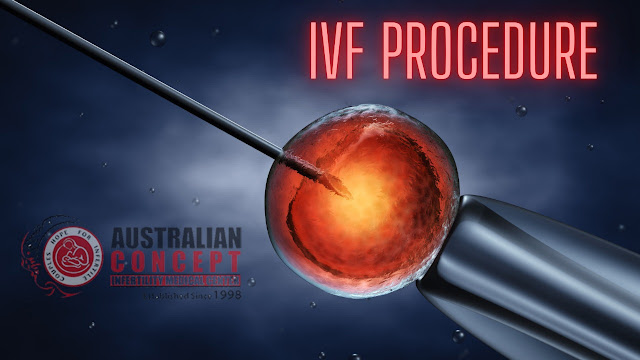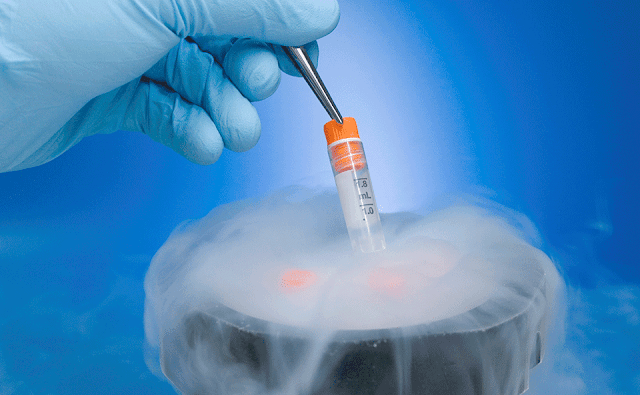Test Tube Baby
Test Tube Baby scientifically known as In vitro fertilization is an assisted reproduction technique wherein the fertilization of human egg and spermatozoa take place outside the body in a Petridis in an IVF lab which is specially designed to maintain sterile condition temperature and pressure.
IVF procedure is a modern version of the test-tube baby procedure. Since the last few years, DNA sequencing technology is utilized for deciding the usage of best embryos for the fertilization step along with the sperms of the male partner.
A single mature egg is subjected to microinjection of a single sperm to achieve fertilization. Intracytoplasmic sperm is a specialized form of an in vitro fertilization that is used primarily for the treatment of severe cases of male factor infertility. It’s a procedure consisting of an injection of a single sperm directly into an egg in order to fertilize it. The fertilized egg is then transferred to the uterus of the expecting mother. The mechanism for ICSI is alike to that for IVF Cycle.Difference between ICSI and IVF
Why Hysteroscopy Done
Hysteroscopy can be carried out for both diagnoses or also for therapy. Hysteroscopy is one of the several procedures that the doctor may recommend to evaluate or treat abnormalities of the uterus or cervix. Hysteroscopy inspects the interlining and interior of the uterus it is not acceptable for assessing issues within the muscular wall on the exterior surface of the uterus. A number of gynaecological problems including:
What is In Vitro fertilization
Facts About In Vitro Fertilization
- In-vitro fertilization can help to achieve pregnancy when other treatments have not worked
- The process involves fertilizing an egg outside the body and implementing it to continue the pregnancy
- One per cent of babies born in the United States are conceived through IVF
- There is a higher chance of multiple births with IVF
Reasons
- Damaged or blocked fallopian tubes
- Low quality and number of sperm
- A problem in ovaries or ovarian dysfunction
Procedure of IVF and Test Tube Baby
- Administration of infertility drugs and injections
- Egg retrieval
- Fertilization and embryo selection
- ERA
- Embryo transfer
Intracytoplasmic sperm (ICSI)
ICSI Used When
- Zero sperm count (azoospermia)
- The sperm has low motility or of an abnormal shape
- Previous IVF attempts have failed
- Fertilization rate had been unexpectedly poor
- Frozen sperm is really used in the medicament
IVF technique that develops first and ICSI is a variation of this technique. In the IVF process, the sperm are allowed to fertilize the egg in a petri dish. ICSI is different in that uses micromanipulator to inject a single sperm inside a single egg. The key difference between IVF and ICSI is the way the eggs are being fertilized in the lab.
- IVF is a less invasive form of egg fertilization compared to ICSI
- ICSI overcome male factor infertility
- IVF less change of egg damage due to human manipulation error
- ICSI Higher number of a normal fertilized egg
- IVF Natural survival of sperm survival of the fittest
- ICSI able to perform egg quality assessment. Ensure all egg has the chance to fertilized no egg wastage.
Hysteroscopy
Hysteroscopy is a minimally invasive surgical procedure for viewing the inside the uterus. Hysteroscopy is carried out by putting a visualizing scope through the vagina and into the cervical opening. Hysteroscopy permit visualization of the interior of the uterus, as well as the hole to the fallopian tubes as well as direct inspection of the cervix, cervical canal and vagina.- Abnormal vaginal bleeding
- Retained or products of conception after a birth or miscarriage
- Congenital anatomical abnormalities of the female genital tract
- Scarring or adhesions from foregoing uterine surgery or instrumentation such as dilation and curettage
- Polyps or fibroid tumours inside the cervical canal or inside the uterine cavity.
Role of hysteroscopy in infertility
The role of hysteroscopy in infertility examination is to substrate conceivable intrauterine changes that could interrupt with disinformation or extension or both of the concepts and to evaluate the benefit of different Infertility treatment modalities in restoring a normal endometrial environment.
The hysteroscopy useful method in the initial screening test. Hysteroscopy became a valuable adjunct in the evaluation of the patient’s abnormal histograms, permitting an accurate diagnosis and sometimes direct treatment. It is also useful for the diagnosis of most congenital anomalies and evaluation of end cervical anatomy.
Hysteroscopy removal of polyps in women with unexplained infertility may increase their chances of becoming pregnant. Abnormality in the uterine cavity such as endometrial polyps submucous fibroid, uterine septum and intrauterine adhesions may disrupt the process of implantation of a fertile egg into the inner layer of a cavity of the uterus, for removing of these abnormalities using hysteroscopy may be recommended to help increase the odds of pregnancy. Hysteroscopy removal of uterine cavity abnormalities result is a definitive increase in pregnancy and live birth rate.






Comments
Post a Comment